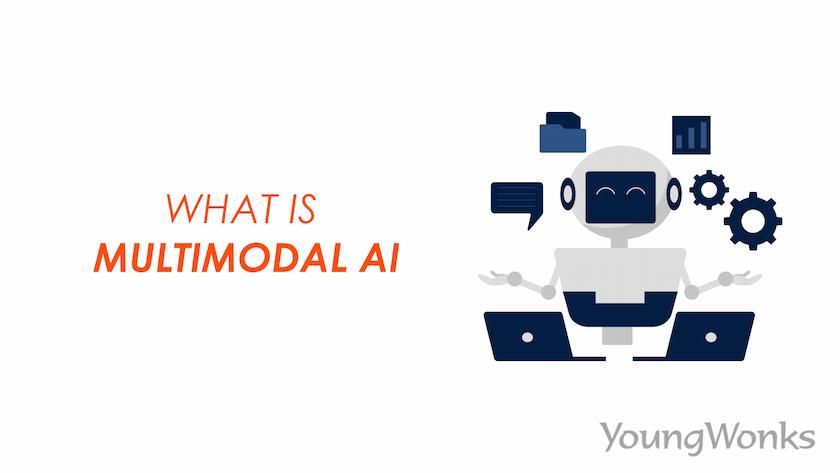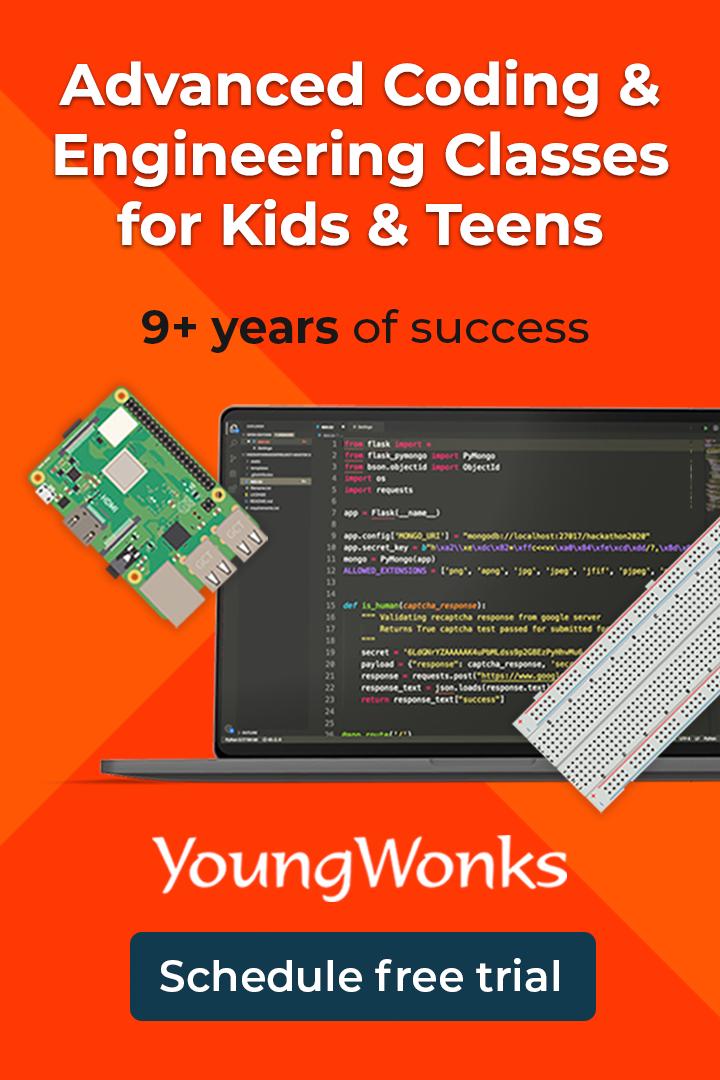Nov 22, 2024 By Team YoungWonks *
What is Multimodal AI?
Artificial Intelligence (AI) has come a long way in recent years, helping computers understand and process information like text and images. But what if an AI could understand different types of data at once — like reading text, recognizing images, and interpreting sounds all together? That’s exactly what Multimodal AI is all about!. By blending various forms of data, multimodal learning helps machines grasp a more comprehensive understanding of the world, mimicking how humans rely on multiple senses to interpret complex situations. This approach is a major step forward compared to unimodal AI, which processes only one type of input at a time.
How is Multimodal AI Different from Regular AI?
Traditional AI models are usually designed to handle just one type of data at a time. For example:
- Text-based AI: Like ChatGPT, which understands and generates text through natural language processing (NLP).
- Image recognition AI: Like apps that can identify plants from pictures using computer vision.
- Speech recognition AI: Like voice assistants that understand spoken words.
Multimodal AI, on the other hand, can process and combine multiple types of information at the same time — just like humans do. When you watch a video, you don’t only process the visuals; you also listen to the sounds, understand the speech, and pick up on emotions. Multimodal AI aims to bring that level of understanding to machines through advanced neural networks and deep learning.
Imagine watching a wildlife documentary: you don’t just see the animals; you hear their sounds, listen to the narrator, and feel the music's emotional impact. A multimodal AI system can process all these elements together to provide a richer, more nuanced interpretation of the content.
Importance of Multimodal AI
By learning from different modalities, multimodal AI can:
- Understand complex situations better.
- Provide more accurate responses.
- Enable more natural interactions with people.
- Enhance decision-making with more context.
- Automate tasks that require multiple types of inputs.
- Power more innovative AI applications and AI solutions.
For example, a medical AI could analyze a patient’s X-ray images, cross-reference them with the doctor’s written notes, and even consider the patient’s speech patterns during consultations to make a more informed diagnosis. This type of AI solution can transform healthcare by automating routine tasks, reducing diagnostic errors, and enhancing overall patient care. In customer service, a multimodal AI chatbot could understand a customer’s text message, analyze an uploaded image of a faulty product, and even detect frustration in the customer’s voice — leading to faster, more personalized solutions and better overall user experience.
The Rise of Multimodal AI Models
In recent years, researchers and tech companies have built powerful multimodal AI models, like:
- GPT-4 (OpenAI): A large language model (LLM) that can process both text and images, allowing you to upload pictures and ask questions about them.
- Kosmos-1 (Microsoft): Combines language, vision, and audio inputs to understand and reason across different modalities.
- Parti (Google): A model that can understand images, audio, and text, opening up new possibilities for creative tools and virtual assistants.
- Gemini (Startup): Builds medical imaging models that integrate MRI scans, CT scans, and clinical text reports for improved diagnostics.
- DALL-E (OpenAI): A generative AI model that creates images from text prompts, showcasing how multimodal systems can generate entirely new content.
These models work by using advanced machine learning techniques to "fuse" different data types together, allowing the AI to make connections between them. This fusion module is key to enabling seamless, integrated understanding across modalities, and it's a major focus of ongoing advancements in the field.
Real-World Applications
Multimodal artificial intelligence is already making an impact across industries:
- Healthcare: Analyzing medical images, patient records, and sensor data for better diagnoses.
- Media & Entertainment: Creating images, videos, and even music based on text descriptions, powered by generative AI models.
- Customer Service: Chatbots that understand speech, analyze images, and respond more naturally.
- Education: Tools that combine video, audio, and text to create immersive learning experiences.
- Autonomous Vehicles: Using cameras, radar, LiDAR, and audio sensors to navigate safely.
- Content Moderation: Scanning text, images, and audio to detect harmful or inappropriate content on social media platforms.
- Sentiment Analysis: Understanding human emotions by analyzing facial expressions, voice tone, and text inputs simultaneously.
- AI Tools for Data Science: Automating complex data analysis, uncovering insights that wouldn’t be possible with unimodal AI systems.
For example, YouTube might use multimodal AI systems to analyze video frames, captions, and audio simultaneously to understand and categorize content more accurately, improving recommendations and flagging inappropriate material in real time.
These use cases not only highlight the versatility of large language models in processing and generating content but also illustrate how multimodal AI is driving innovative solutions across industries.
The Challenges
Despite its potential, building multimodal AI isn’t easy. It requires:
- Huge datasets with different modalities.
- Algorithms that can effectively combine and understand multiple data sources.
- Significant computing power to process all this complex information.
- Alignment between different data formats (e.g., matching text descriptions to image features).
- Robustness against noisy, incomplete, or contradictory inputs.
Researchers are actively working to solve these challenges. For instance, self-supervised learning techniques allow AI models to learn from unlabeled data, reducing the need for massive, carefully labeled datasets. Meanwhile, improved neural networks and transformer architectures are making multimodal fusion more efficient and accurate.
The Future of Multimodal AI
Even with these challenges, the future looks bright. Researchers are continuously developing better algorithms, collecting more diverse datasets, and finding ways to make multimodal AI faster and more reliable. As this AI technology evolves, we can expect AI systems to become even more helpful, intuitive, and capable of understanding the world the way humans do.
In the coming years, we might see:
- Seamless Human-AI Collaboration: AI assistants that can see what you’re working on, listen to your feedback, and offer real-time suggestions.
- Enhanced Creativity Tools: Platforms that help artists and musicians by transforming sketches, melodies, and written concepts into polished works of art.
- Universal Translation & Accessibility: Tools that translate languages, interpret sign language, and even describe images to visually impaired users in real time.
- Smarter Interfaces: AI-powered interfaces that fluidly adapt to users' needs by processing multiple types of input at once.
- GenAI-Driven Applications: Expanding the scope of AI applications by using GenAI to create personalized content, automate processes, and power next-gen digital experiences.
In short, Multimodal AI is a game-changer that brings us one step closer to truly intelligent systems that see, hear, and understand the world as we do. And while we’re still in the early stages, the possibilities are endless!
Conclusion
Multimodal AI is revolutionizing how machines understand and interact with the world by processing multiple types of data simultaneously. Unlike traditional AI, which focuses on a single modality, multimodal AI integrates text, images, audio, and more to provide richer insights and more human-like understanding. This advancement is already transforming industries such as healthcare, customer service, media, and autonomous systems.
Despite challenges like data alignment, computational demands, and the need for robust models, ongoing research is making multimodal AI more efficient and reliable. As technology progresses, we can expect AI systems to become even more intuitive, enhancing human-AI collaboration, creativity, accessibility, and real-world applications. The future of AI is multimodal, paving the way for smarter, more adaptable, and more immersive experiences across various domains.
*Contributors: Written by Reuben Johns; Edited by Disha N; Lead image by Shivendra Singh

